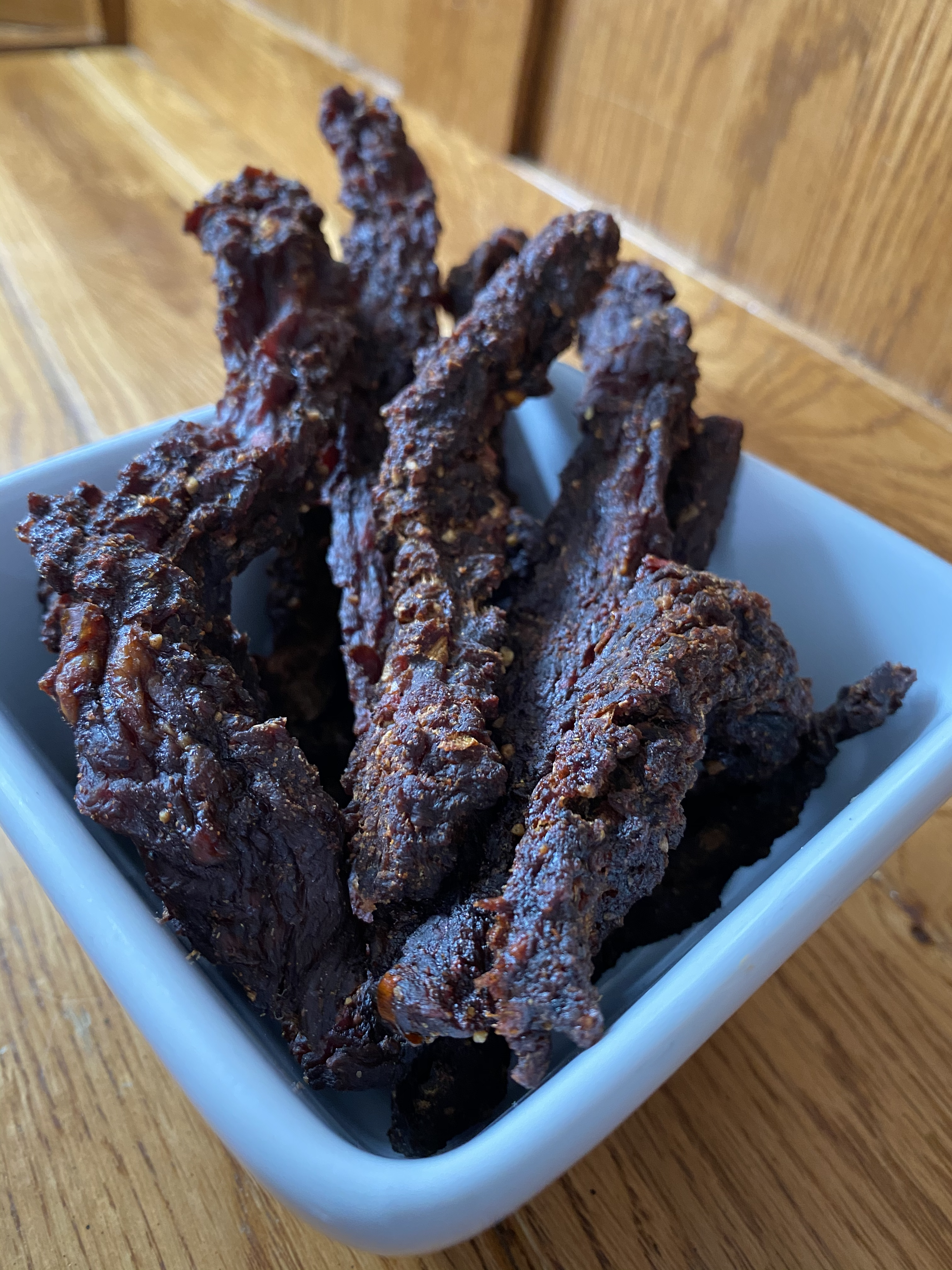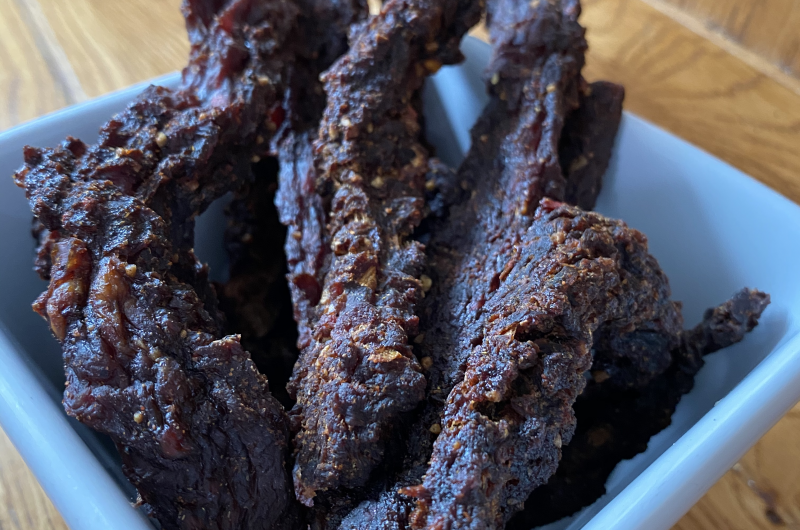A trip up north to Lake Huron was an annual event in my family, from the time I was born. We would always stop at a little Jerky shop on the way. The shop had all types of jerky and all flavors of jerky. It was the best jerky. I introduced my husband to this ritual when we got married. He instantly was on board. Our favorite jerky was the beef jerky with a bit of heat, the jerky was the type that was thick pieces of chewy meat that had to be kept refrigerated.
Once I was diagnosed with an MSG intolerance, and then eventually with Celiac disease, we had to cut the Jerky shop out of our annual trip. This inspired my husband and I to try to recreate our favorite jerky at home. It never last long in our house. We buy our beef from a local farmer. The beef is grass-fed and organic. Every year when we get our “freezer” beef we look forward to the jerky from our cube steaks.
I made a video of how exactly we make this jerky. You can find the video linked below the recipe. This is a great snack, packed full of flavor and protein. We often take it in a small cooler when we are on car trips, as it makes for an easy, healthy snack that is easy to transport and eat in the car. The batch we made for this post was quickly demolished by my family. I only ate one piece, but it was delicious.
Beef Jerky
Course: SnacksDifficulty: Easy8
servingsFlavorful beef jerky recipe that must be refrigerated
Ingredients
3-4 pounds cube steak
1/3 cup gluten-free Worcestershire Sauce
1 cup organic tomato ketchup
1 1/3 cups gluten-free Tamari soy sauce
2 Tablespoons raw honey
2 teaspoons ground black pepper
4 teaspoons granulated onion powder
2 teaspoons smoked paprika
1 teaspoon crushed red pepper flakes (cayenne pepper) or to taste
Directions
- Trim the cube steak of any excess fat. Slice into 1/2-inch wide strips (freezing meat for a short while can make slicing easier).
- Mix together all marinade ingredients in the container you wish to use to marinate (can be a zip-top bag).
- Add each strip to the marinade make sure to coat all sides of each strip. If you place several strips in at once, they tend to clump and not get totally coated where they touch.
- Allow to meat to marinate in the refrigerator (covered or in a zip-top bag) for anywhere from 3 to 8 hours. We marinate it overnight.
- Remove meat from marinade piece by piece and place on a dehydrator tray, they should not be touching on the trays but can be close together.
- Following directions for your dehydrator, set it at 155℉/68℃. The time you will dehydrate is very dependent on how thick your meat is, the weather and humidity where you are, etc. I suggest checking it after 6 hours and every couple hours after that till it is done. It should look dry, cooked but still have some meatiness to it (not super dried out texture). You will find that the smaller pieces finish sooner, so we pull them off and place in a sealed container in the refrigerator and let the large pieces continue to dehydrate.
Recipe Video
Notes
- This recipe as written has a nice kick at the end from the cayenne. If you don’t want a bit of burn, you can lower the amount of cayenne. The photo above is a bit drier end result than I prefer, but still delicious.


